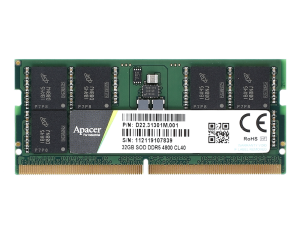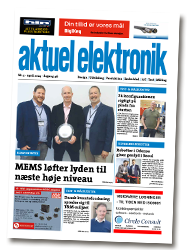Apacer’s Industrial DDR5 SODIMM Ushers In The Next Generation of High-Performance Computing; Expanding High-Bandwidth Industrial Applications
5G’s market penetration is growing rapidly and requires processing speed upgrades that new technologies such as DDR5 can offer. DDR5 is truly a step forward into a new generation of industrial memory, and can better meet the needs of high-bandwidth industrial applications such as data centers, AIoT and machine learning. Following up on its successes in the field of industrial DDR5 UDIMM, Apacer has announced that industrial DDR5 SODIMM is finally available for testing. Samples have already been sent to Intel for testing and verification, and worldwide compatibility testing will begin in September 2021. The power saving and heat reduction benefits will make DDR5 attractive to manufacturers of high-performance embedded systems and industrial computers, and accelerate the development and commercialization of next-generation computing.
Afte r observing trends affecting customers in such fields as edge computing, AI and supercomputing, Apacer realized DDR5 could invigorate their products. So Apacer’s industrial DDR5 SODIMM employ Micron’s latest 1znm 16GB DDR5 IC, and feature memory transfer rates of up to 4800MHz. They incorporate an on-die ECC mechanism that greatly strengthens the reliability, availability and serviceability of the DRAM IC. IPC manufacturers will also appreciate that these modules are protected by Apacer’s highest-level anti-sulfuration technology.
r observing trends affecting customers in such fields as edge computing, AI and supercomputing, Apacer realized DDR5 could invigorate their products. So Apacer’s industrial DDR5 SODIMM employ Micron’s latest 1znm 16GB DDR5 IC, and feature memory transfer rates of up to 4800MHz. They incorporate an on-die ECC mechanism that greatly strengthens the reliability, availability and serviceability of the DRAM IC. IPC manufacturers will also appreciate that these modules are protected by Apacer’s highest-level anti-sulfuration technology.
One crucial way in which DDR5 outshines earlier forms of DDR is in power management. DDR5 modules incorporate a power management IC (PMIC) on the module itself to control the system’s load while also improving signal integrity and compatibility. DDR5 modules require just 1.1V, which will translate into significant power savings and reduced heat generation.
The new industrial DDR5 SODIMM from Apacer will fully support Intel’s 12th-generation Alder Lake mobile processors. It will be available in capacities of 16 and 32GB, and is expected to enter mass production in 2022. This module is one more way that Apacer strives towards its annual goal of “adding value, enhancing collaboration.” https://industrial.apacer.com/


